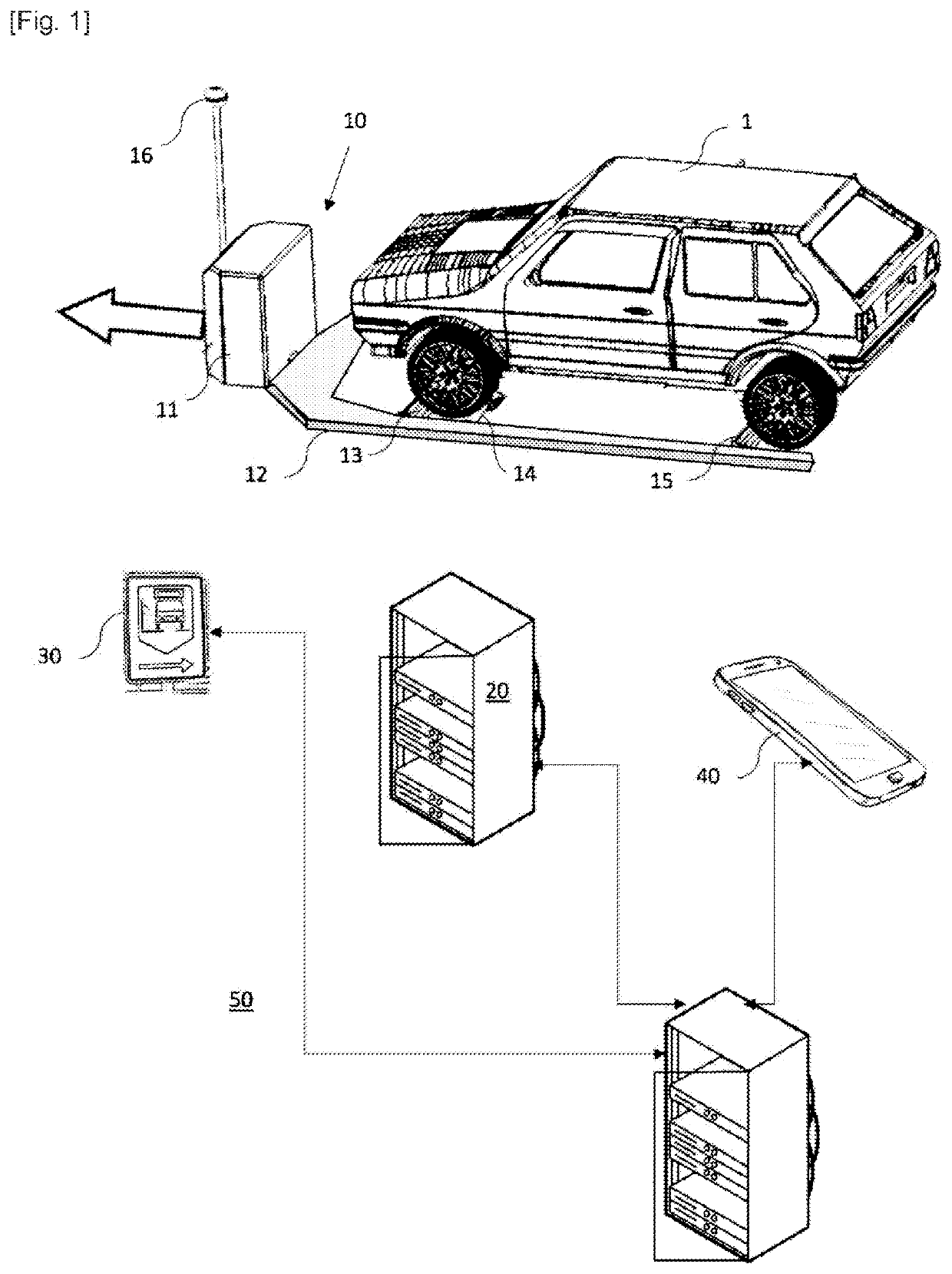Method for managing a fleet of autonomous parking robots by a supervisor
a technology of autonomous parking and supervisory method, applied in the direction of vehicle position/course/altitude control, process and machine control, instruments, etc., can solve the problem that the solution cannot be used to respond to large flows of cars
- Summary
- Abstract
- Description
- Claims
- Application Information
AI Technical Summary
Benefits of technology
Problems solved by technology
Method used
Image
Examples
Embodiment Construction
[0039]The present invention will be better understood on reading the detailed description of a non-limiting example of the invention which follows, with reference to the appended drawings, where:
[0040]FIG. 1 shows a schematic view of a system according to the invention.
[0041]The invention relates to the management of a fleet of robots whose actions are coordinated by a supervisor. The invention relates more particularly to a dissociation between:[0042]Computing the strategies for moving and optimizing the actions of the robot fleet, which is carried out by the supervisor only[0043]Execution of a mission transmitted by the supervisor by the robot to which the mission has been allocated, and which is transmitted by the supervisor in the form of a brief digital message comprising an action identifier, a designation of one or more tasks and a designation of at least one starting or ending point, associated with an identifier of one of said autonomous robots.[0044]Episodic transmission b...
PUM
 Login to View More
Login to View More Abstract
Description
Claims
Application Information
 Login to View More
Login to View More - R&D
- Intellectual Property
- Life Sciences
- Materials
- Tech Scout
- Unparalleled Data Quality
- Higher Quality Content
- 60% Fewer Hallucinations
Browse by: Latest US Patents, China's latest patents, Technical Efficacy Thesaurus, Application Domain, Technology Topic, Popular Technical Reports.
© 2025 PatSnap. All rights reserved.Legal|Privacy policy|Modern Slavery Act Transparency Statement|Sitemap|About US| Contact US: help@patsnap.com

